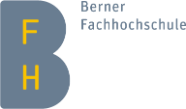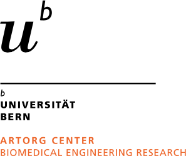- Research Project
RAMOS A digital care assistant to support healthcare professionals
QUMEA® is the most advanced and comprehensive system for fall prevention and mobility monitoring in hospitals and care facilities. The system is to be expanded to include new movement and behavior parameters (e.g., walking distance, gait behavior).
In order to make these enhancements, we are looking for study participants between March 2023 and June 2024 who would like to give us feedback on the system. Inclusion criteria are: 1) Resident, relative, or nursing professional 2) German-speaking.
Factsheet
- Institute(s) Nursing
- Research unit(s) Innovation in the Field of Digital Health
- Funding organisation Innosuisse
- Duration (planned) 01.07.2022 - 31.12.2024
- Head of project Pascale Denise Zürcher
-
Project staff
Marco Viktor Franz-Josef Buri
Christoph Barmet
Philipp Rebsamen
Tobias Nef
Lena Bruhin -
Partner
Qumea AG
ARTORG Center for Biomedical Engineering - Keywords Early detection, Monitoring, Falls, Cognition, Behavioral change, Data-driven care, Quality of Life, Self-determination, Patient safety, Discreet technology
Initial situation
In light of demographic change and the shortage of skilled workers, bottlenecks in the healthcare system are becoming an increasingly pressing issue. New measures are needed to ensure the safety and care of residents in hospitals, retirement homes, and nursing homes in the future.
Small, inconspicuous radar sensors were installed on the ceilings of residents' rooms at Tertianum and the UPD. These sensors were developed by QUMEA AG and provide healthcare professionals with insights into data (e.g., walking behavior, sleep, cognition) so that they can act efficiently and appropriately.
Objectives
We hope that the findings of this study will reduce the physical and cognitive burden on nursing staff and doctors in the treatment and care of residents. In addition, the sensor system from QUMEA AG will be further developed in order to continuously improve and simplify nursing and medical care and support.
Method
The observational study was conducted from March 2023 to June 2024. The study focused on nursing staff, residents, and relatives. The ceiling sensors installed continuously recorded data on the residents' movement behavior. This data was used to identify long-term correlations between movement patterns and changes in condition. The latter was recorded at regular intervals in the form of assessments of the residents (mobility and mental health).
In addition, the effect of the sensor system on the daily work of healthcare professionals was assessed by recording the distance they traveled at specific times.
In the qualitative part of the study, nursing staff, residents, and relatives were interviewed and asked to participate in focus groups about their use of technology and their expectations and concerns regarding the sensor system.
Results
The series of articles on SocietyByte presents key findings from the BFH's RAMOS research project on digitalization in nursing care. They provide practical examples of how sensor technologies and algorithms can be integrated into everyday nursing care, the opportunities and challenges involved, and the conditions that are crucial for successful technology acceptance. The project thus provides valuable insights for the further development of digital nursing assistants such as QUMEA Care.




